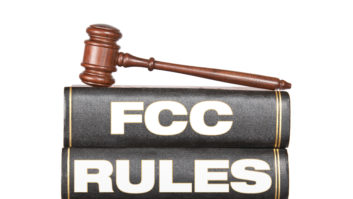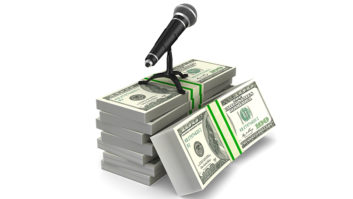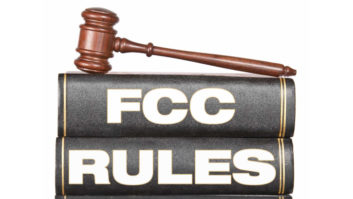Even though the FCC is proposing lower regulatory fees for U.S. radio broadcasters this year, the part owner of a Pennsylvania AM station is complaining that fees for the senior band are still too high.
Edward Schober is a longtime broadcast engineer and part of the ownership group that operates WKGE(AM) in Johnstown, Pa. In comments to the FCC, Schober says there is a “clear inequity in the proposed fees with respect to commercial radio stations.” In particular, he is irked by the fees AM stations pay compared to FM stations.
The FCC’s fee methodology for setting regulatory fees considers several factors, including the allocation of labor measured in FTEs or full-time employee positions. Schober says the FCC’s notice also mentions that additional characteristics of the facility and population are considered in determining the regulatory fees for AM and FM stations.
“I submit that the characteristics of AM stations, and particularly class D AM stations, are grossly misaligned with the amounts of fees allocated to the other classes of stations,” Schober told the FCC.
Schober argues FCC fees should relate to the “relative value and magnitude of the spectrum occupied by stations,” and goes on to make his case by highlighting reasons why AM deserves a bigger break than FM. “FM stations have a channel bandwidth of 100 kHz. AM stations have a channel bandwidth of 5 kHz, only 5% of the spectrum of an FM assignment,” he comments.
Additionally, he notes AM stations are located in the Medium Wave and are subject to large amounts of electrical interference, and that Class B, C and D AM stations are subject to interference from other stations at night.
Schober tells the FCC: “FM stations have uniform coverage 24 hours per day, while AM station coverage is much reduced at night (with the exception of class A stations). FM analog stations have a full time quality stereo signal over their entire service area.”
The broadcast engineer and station owner details further why AM radio broadcasters deserve a break on fees, including AM’s “monophonic, low quality signal” as an example. FM also has advantages when it comes to digital capabilities and the ability to transmit multiple channels and metadata, Schober says in his comments. “AM radio stations have no such benefit,” he says.
[Read more stories about the future of AM radio]
He continues: “When sold, AM radio stations without FM translators sell for less than half (in many cases less than a quarter) of the prices for FM stations with similar coverage in similar markets. When AM stations are paired with FM translators to be sold, their value is often based solely upon the coverage of the FM translator, and the coverage of the AM station is ignored. It should be noted that FM translators are subject to separate regulatory fees.”
By every measure, the potential earnings of an FM station in a given market are many times that of an equivalent AM station, he says.
Schober then compares regulatory fees among the AM classes, which he considers “incredibly flawed, with values seemingly pulled from a hat.”
Specifically he points to the proposed fees for AM Class C and AM Class D stations. Class C stations have reduced coverage at night, but Class D stations typically operate in the daytime only. Yet, Schober points out that the FCC’s proposed fees have Class C stations paying $370 annually and Class D stations paying $410.
“I hereby request that the FCC review its allocation of fees between AM and FM stations in light of these facts and revise the AM station fees other than class A, significantly downward,” he comments.
Schober proposes the following: “The fees of a full time AM Class B station should be between 35% and 50% of an FM station serving the same population. Class C and Class D stations should be assessed at 15% to 35% of Class B stations. AM Class A stations have the advantage of extremely large service areas free of domestic co-channel and first adjacent channel interference. One could argue that AM Class A stations should be assessed regulatory fees comparable to an FM station covering the same population.”
The FCC must collect around $390.2 million in regulatory fees this year. It proposes to collect about 32% from industries regulated by the Media bureau, which has oversight of broadcast radio and TV. Broadcasters would be responsible for about $55.7 million of that total.
Comments in the proceedings MD Dockets 22-301 and 23-159 can be viewed online. Reply comments are due June 29.







